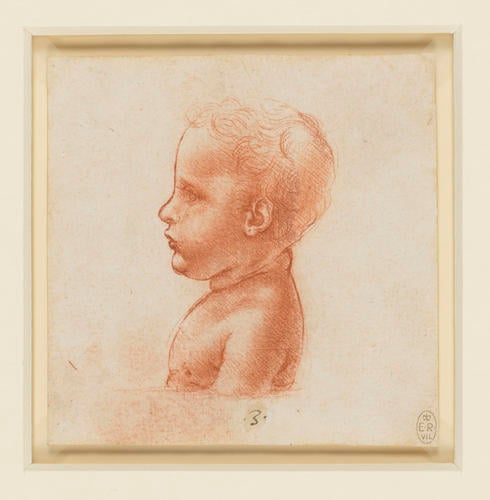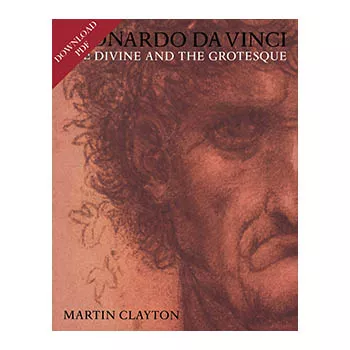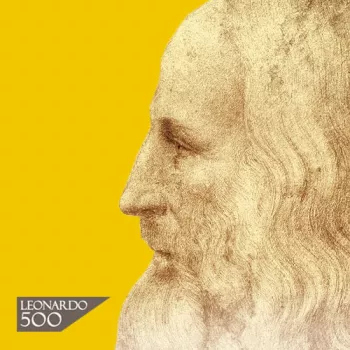The bust of a child in profile c.1500
Red chalk | 10.0 x 10.0 cm (sheet of paper) | RCIN 912519
-
A profile drawing of the bust of a child, turned in profile to the left and terminating at a clear horizontal line. Melzi's number 3.
The drawing was once thought to be a study for the Virgin of the Rocks, for it strongly resembles the Child in the later version of that painting (London, National Gallery). But this was a common profile for representations of an infant, with a high forehead, slightly upturned nose, protruding upper lip, and tightly rounded chin. Artists of the Renaissance usually reproduced a standard type for the Christ Child (for instance), rather than making a fresh study from the life in each case. Even on the rare occasions that individual children were portrayed, they were so generalised to this type as to be almost meaningless as portraits in the normal sense.
This drawing is related to two other studies of the bust of a child, on the drawing RCIN 912567. The chest of the child terminates at the same horizontal line in all three studies. The obvious context would be a terracotta bust of the Christ Child or Infant Baptist, common during the Renaissance as suitable exemplars in children’s nurseries. While no such bust by Leonardo is known – indeed, no surviving sculpture is generally accepted as being by the artist – the Milanese artist and writer Gian Paolo Lomazzo described in 1584 a terracotta bust of the Christ Child supposedly by Leonardo, in his own collection, 'in which the simplicity and purity of the child appears with an added touch that denotes wisdom, intellect and majesty, and the countenance, while retaining the character of a tender child, seems to express the wisdom of old age.' [Lomazzo 1584, II, ch. VIII.]
The careful handling of the red chalk in this drawing suggests a date around 1500. The putative terracotta could thus have been executed either during Leonardo’s last years in Sforza Milan – perhaps for the nursery of Ludovico’s sons Massimiliano (b. 1493) and Francesco (b. 1495) – or soon after his return to Florence in 1500.
See M. Clayton, Leonardo da Vinci: The Divine and the Grotesque, London 2002, and A life in drawing, London, 2018Provenance
Bequeathed to Francesco Melzi; from whose heirs purchased by Pompeo Leoni, c.1582-90; Thomas Howard, 14th Earl of Arundel, by 1630; probably acquired by Charles II; Royal Collection by 1690
-
Creator(s)
Acquirer(s)
-
Medium and techniques
Red chalk
Measurements
10.0 x 10.0 cm (sheet of paper)













